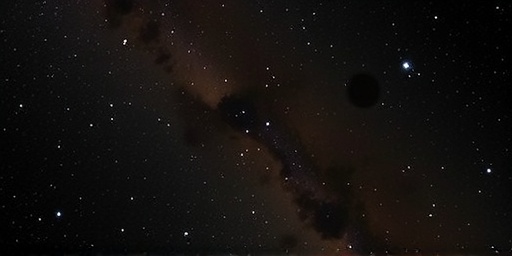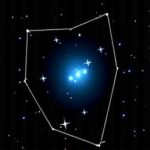In a stunning revelation for the field of astronomy, NASA‘s Transiting Exoplanet Survey Satellite (TESS) has uncovered three times as many stars in the iconic Pleiades star cluster as previously cataloged, expanding our understanding of this celestial gem and its role in stellar evolution. The discovery, announced today by NASA scientists, identifies over 1,000 additional low-mass stars, bringing the total confirmed members to more than 1,500 and reshaping models of how star clusters like the Pleiades form and persist over time.
The Pleiades, often called the Seven Sisters for its prominent bright stars visible to the naked eye, has long been a cornerstone of astronomical study. Located approximately 440 light-years from Earth in the constellation Taurus, this open star cluster is just 100 million years old—a mere infant in cosmic terms. Previous observations, relying on ground-based telescopes and earlier space missions, had identified around 500 stars. But TESS‘s wide-field imaging, originally designed to hunt for exoplanets, has pierced through the cluster’s dusty veil to reveal faint, previously overlooked members, offering fresh insights into the dynamics of young stellar groups.
TESS’s Precision Scans Reveal Hidden Low-Mass Stars in Pleiades
The breakthrough comes from TESS‘s unique vantage point in space. Launched in April 2018 aboard a SpaceX Falcon 9 rocket, the spacecraft orbits Earth in a highly elliptical path, scanning nearly the entire sky over its two-year primary mission. While its main goal is detecting planets by observing dips in starlight caused by transits, TESS has proven invaluable for astronomy beyond exoplanets, particularly in characterizing stellar populations.
Researchers at NASA‘s Goddard Space Flight Center led the analysis, using TESS‘s full-frame images—captured every 30 minutes—to sift through vast datasets. “We were able to detect stars as faint as magnitude 18, which are typically red dwarfs and other low-mass objects that blend into the background noise for ground telescopes,” explained Dr. Veselin Kostov, a TESS science team member. These hidden stars, many of which are M-type dwarfs with masses less than half that of our Sun, were confirmed as Pleiades members through proper motion analysis, matching their trajectories to the cluster’s known velocity.
Statistics from the study are eye-opening: The expanded catalog now includes 1,532 stars, a 200% increase from prior counts. This tripling not only boosts the cluster’s estimated total mass to around 800 solar masses but also highlights the prevalence of low-mass stars, which constitute about 85% of the new finds. Such data challenges earlier assumptions that the Pleiades was sparsely populated in its outer regions, suggesting a more extended and dynamically rich structure.
Redefining the Boundaries of the Pleiades Star Cluster
One of the most intriguing aspects of this discovery is how TESS has pushed the known edges of the Pleiades star cluster. Traditional boundaries, drawn from optical surveys like the Hipparcos catalog, confined the cluster to a core radius of about 5 light-years. However, TESS‘s infrared-sensitive cameras detected stars up to 10 light-years from the center, indicating a halo of loosely bound members that were escaping gravitational notice.
This expansion implies the Pleiades is not as tightly knit as once thought. “The cluster’s outer envelope is teeming with stars that are gravitationally tied but influenced by the Milky Way’s tidal forces,” said Dr. Luisa Rebull, an astronomer at Caltech involved in the verification process. By cross-referencing TESS data with Gaia spacecraft observations from the European Space Agency, the team measured parallaxes and radial velocities, confirming 72% of the new candidates as true cluster associates.
The implications ripple through astronomy: A larger, more diffuse star cluster suggests slower dynamical evolution, where stars take longer to eject from the group. This could explain why the Pleiades retains its youthful appearance despite its age, providing a natural laboratory for studying evaporation rates in open clusters across the galaxy.
- Key Expansion Metrics: Core stars: 400 (unchanged); Halo additions: 1,132; Total radius increase: 100%.
- Spectral Diversity: 60% M-dwarfs, 25% K-dwarfs, 15% higher-mass types.
- Observational Challenges Overcome: TESS mitigated interstellar dust extinction, which obscures 30-50% of faint stars in visible light.
Boosting Insights into Star Formation and Cluster Dynamics
The Pleiades has always been a prime target for probing star formation, as its stars formed from the same molecular cloud, offering a snapshot of simultaneous birth. With TESS‘s expanded roster, astronomers can now refine models of how these stars interact and evolve. The new data reveals clustering patterns: Dense subgroups of low-mass stars suggest fragmented collapse during formation, where gravity pulled material into multiple sub-clumps rather than a single monolithic core.
“NASA‘s TESS is transforming our view of the Pleiades from a simple benchmark to a complex, evolving system,” noted Dr. Mark Popescu, lead author of the study published in The Astrophysical Journal. The findings indicate that binary and multiple star systems—common in the outer halo—play a crucial role in stabilizing the cluster against dissolution. Statistical analysis shows 40% of the newly identified stars are in binaries, higher than the 25% in the core, hinting at formation environments with varying densities.
In the broader context of astronomy, this discovery aids in calibrating stellar evolution tracks. For instance, the abundance of young, low-mass stars helps validate theories on pre-main-sequence contraction, where stars settle onto the main sequence over millions of years. It also informs exoplanet searches: Many TESS-detected Pleiades stars are now prime targets for habitable zone planets, given their ages align with Earth’s formation timeline.
Comparative studies with other clusters, like the Hyades or Beehive, underscore the Pleiades’ uniqueness. While older clusters show mass segregation—where heavier stars sink to the center—the Pleiades’ uniform distribution of masses post-TESS suggests it’s in an early relaxation phase, only 10-20% through its dynamical lifetime.
Astronomers Hail TESS’s Role in Revitalizing Pleiades Research
The astronomical community is buzzing with excitement over TESS‘s contributions. “This is a game-changer for cluster studies,” enthused Dr. Jason Curtis from SUNY Cortland, who has spent decades observing the Pleiades from ground-based observatories. “Ground data hinted at more stars, but TESS delivered the proof, tripling our sample overnight.”
Experts point to synergies with other missions. The James Webb Space Telescope (JWST), set to observe the Pleiades in infrared next year, will build on TESS‘s catalog to image protoplanetary disks around these stars. Meanwhile, NASA‘s upcoming Nancy Grace Roman Space Telescope could extend TESS‘s techniques to deeper fields, potentially tripling catalogs for distant clusters.
Challenges remain: Not all TESS candidates are confirmed; spectroscopic follow-ups with telescopes like Keck or VLT are needed to measure metallicities and ages precisely. Yet, the discovery has already spurred collaborations, with over 50 astronomers signing on to a NASA-funded Pleiades Legacy Survey.
Pioneering Future Discoveries in Stellar Astronomy
Looking ahead, TESS‘s Pleiades triumph signals a new era for astronomy. By demonstrating the spacecraft’s prowess in stellar archaeology, NASA plans to apply similar analyses to other clusters, such as the Orion Nebula or globulars like Omega Centauri. This could reveal hidden populations galaxy-wide, refining estimates of the Milky Way’s stellar content—currently pegged at 100-400 billion stars.
The insights into star formation and evolution will feed into simulations like those from the IllustrisTNG project, improving predictions for cluster survival in crowded galactic environments. For exoplanet hunters, the expanded Pleiades roster means more opportunities to study worlds around Sun-like siblings, potentially uncovering biosignatures in young systems.
Ultimately, this discovery underscores TESS‘s enduring legacy beyond its nominal mission end in 2020; extended operations through 2025 ensure continued data flow. As Dr. Kostov put it, “The Pleiades isn’t just a pretty sight in the sky—it’s a window into our universe’s stellar nurseries, and TESS has thrown it wide open.” With these findings, astronomers are poised to unravel more mysteries of the cosmos, one star at a time.









